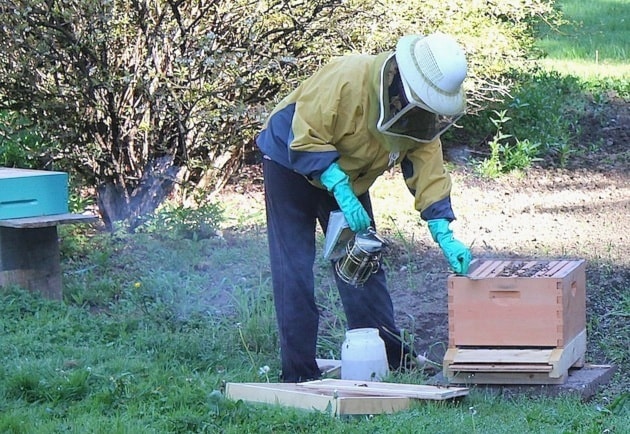It's that time of year when Chilliwack residents might see a honeybee swarm hanging off a tree or building.
First thing? Don't panic.
Chilliwack Beekeeping Community Laura Delisle has some information that may help.
There is a list of local "swarm catchers" who can sometimes be called upon.
"It is important to know about honeybee swarms given that Chilliwack is an agricultural-driven community, and honeybees play an incomparable role in the success of our agriculture economy, with their essential pollination services."
No need for anyone to be frightened or to get out the poison, there are "swarm catchers" who may be able to assist in rescues.
These type of bees typically travel up to three kilometres from home when foraging or swarming.
"So honeybee swarms in the city can originate from out-laying agricultural lands," she said, but it's pretty well "impossible to know for sure" where they're coming from.
Keep in mind, honey bees are completely different from bumble bees for example. A recent swarm that got into someone's dryer was a swarm of bumble bees. They were successfully removed with the help of a neighbourly sort willing to help out in a pinch.
"With all the devastation happening right now with our honeybee populations, it is important to do what we can to sustain honeybee populations, and this includes rescuing or restoring swarm populations back to apiary locations," said Delisle.
So what exactly should someone do if I they spot a swarm somewhere in Chilliwack?
"Don't panic," said Delisle. "Honeybees in a swarm are at their gentlest. With no home or honey reserve to defend, they are relatively calm and docile."
The next step is contacting some beekeepers as soon as the swarm is spotted so they don't escape to somewhere it would be harder to capture them.
Local beekeepers have the equipment and knowledge needed to take care of the swarm.
Most people can't tell the difference between a honey bee, a wasp or a bumblebee.
So what exactly is a swarm?
It is when thousands and thousand of bees from a honeybee hive, make the decision to take off and find another home. Reasons range from overcrowding in the hive, humidity and temperature issues and since swarming is inherent in their nature, the phenomenon can happen despite prevention efforts.
After thousands of bees take flight, they cluster around the queen until it's decided where the next hive will be.
"In this stage, you will find a large clump of bees hanging from a tree, or a structure, in which they will stay anywhere from one hour to a week, depending on environmental factors, their ability to find a home, and other."
Delisle said the Chilliwack Beekeeping Community has compiled a list of dedicated "swarm catchers" who could possible to come collect a honeybee swarm. Call 604-819-9278 or email: chilliwackbeekeepers@gmail.com
